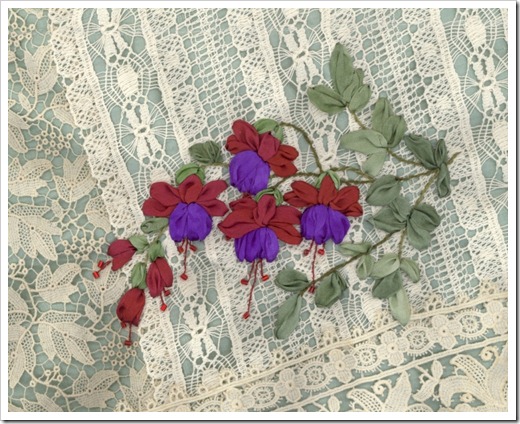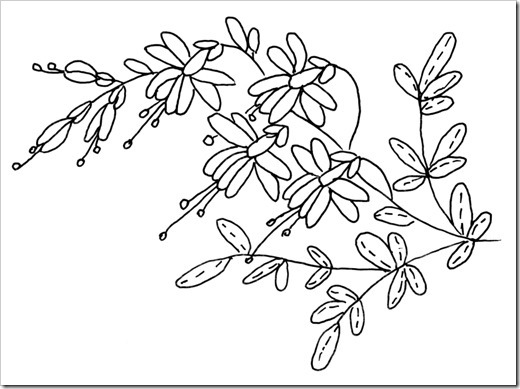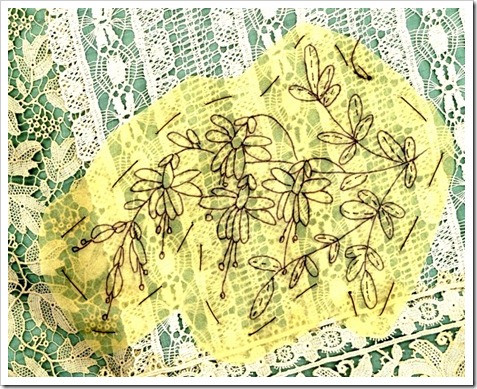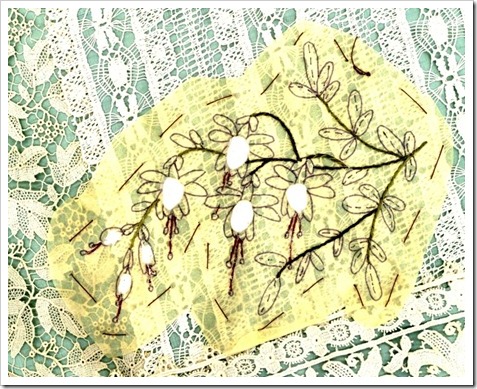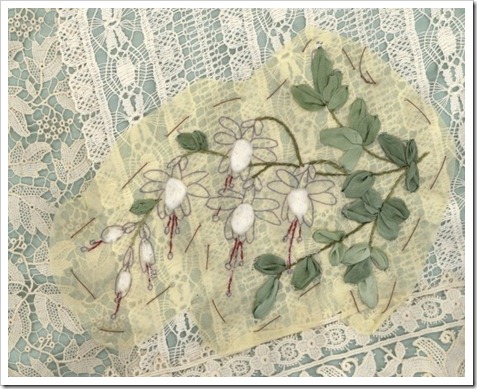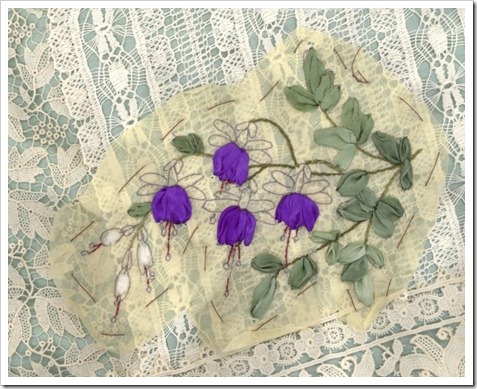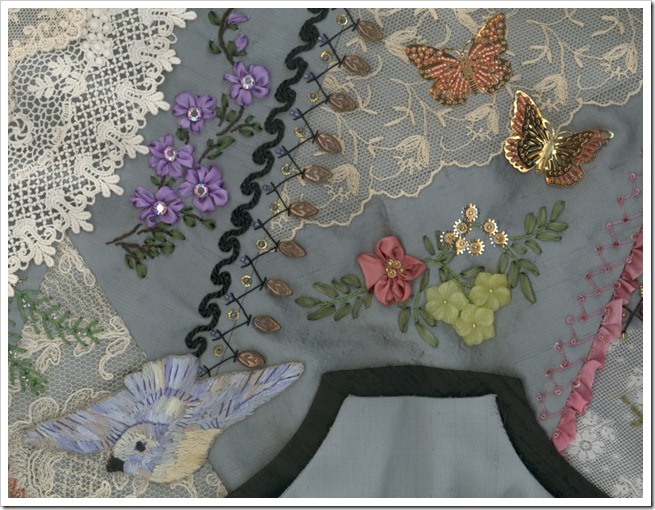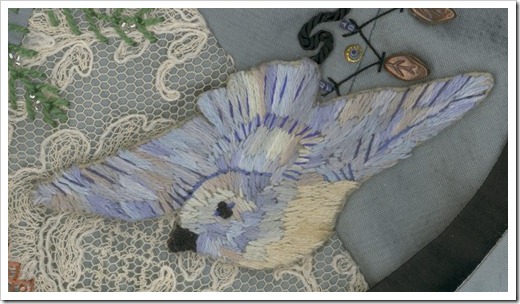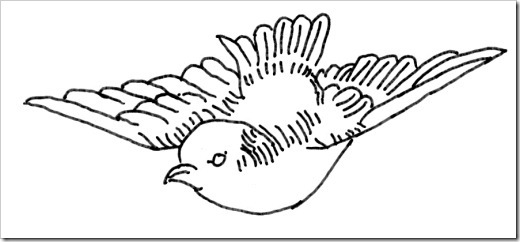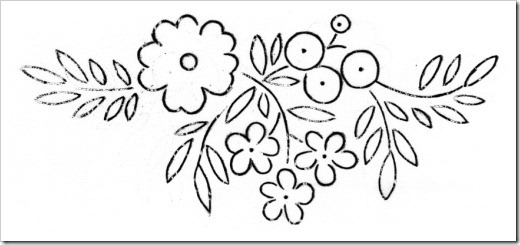It took a long time, but I now have 100 followers. As a gift for each of you, I have written up the instructions for an antique design I found in an old ribbon work book. The instructions in the book are strangely written and they called for things I’ve never heard of, not usable for me. As I worked the flower, I just kept a running record on the computer and in photos of what I did. If you should embroider this fuchsia design, it would be great to see a photo of yours.
- Trace the design onto Golden Threads quilting paper (this paper is strong enough to last throughout all of the embroidery.) Use a black micro pen or other permanent marker. Since the paper is transparent you will be able to chose the direction of your motif with the fuchsias to the left or right of the leaves. Trim the paper leaving 1/2” all around the design.
- Pin the design to the surface of your fabric exactly where you want the design to be. Baste all around it in the 1/2” margin.
- Using 2 strands of green embroidery floss and a back stitch, follow along all of the stem lines. Using 2 strands of the same or another green floss, whip the thread through and around each of the back stitches. I used the same color throughout as I like the stems to just be there and not standing out too much.
- Cut small pieces of batting and pad the area of the outer petals of the flowers and also the flower buds.
- Using 1 strand of floss and an outline stitch, do the stamen stems. I actually used regular sewing thread as I didn’t have the color floss I wanted. The thread seemed to cut into the paper as I worked so be careful if you use it not to destroy your pattern too much. Because you are using a traced pattern, and if this happens, you can always remove the pattern and put a fresh one on using the stitches that you’ve already made to place it correctly.
Before I go onto the ribbon work, please visit this Google search of images to see all of the variations in color and shape that fuchsias grow. I chose to use colors that didn’t match any of these but that I like for the project I’m doing.
I used 13 mm silk ribbon throughout (You can also use 7 mm if you prefer on this size pattern, but definitely if you make the design smaller.)
- Leaves are first and are just a straight stitch. Use a large eye needle (I use a 14 chenille with 13 mm ribbon) and start your stitch on the end of the leaf and then go back into the fabric at the stem. You should shape each leave as you go to be sure the ribbon is lying on your fabric so that the edges will curl under on the majority of them. You can pull one edge of the ribbon in a little more than the other from the backside of your work. This gives the leaves a different slant. If one twists a little, that’s fine. It makes them look more natural.
- Flowers are also straight stitches throughout but the order in which they are done is the key. Using the original drawing as a guide, work the petals that are under other petals first. We will start with the center petals shown here in purple. Stitch your petals from the outside (as you did the leaves) to the center of the flower. Use your needle to push the batting back underneath the ribbon. As with the leaves, work with each petal to get the direction of how the ribbon lays the way you want it. Sew the back ribbon instead of using knots to cut down on bulk. Work one flower at a time and cut your ribbon. Traveling along the back is a waste of ribbon and gives your needle more to get caught on as you move around your design.
Next, do the outer petals of the flower and the buds in a contrasting color (burgundy on mine) and just follow the pattern, stacking the petals as shown in the design.
- The calyx of each flower and bud are two small straight stitches. You can use a 7 mm ribbon here if you like.
- Remove paper. Tweezers will come in handy here. Be gentle, slow and deliberate and you won’t hurt any of the design.
- Add a bead or French knot at the end of each stamen stem.
Finally, let me know how you did on this, whether the instructions were clear or not, and any other critique you may have will be appreciated.
Enjoy Stitching!! Reen
